NP-F-1011W Galvanize It!
Credit: 1 PDH
Type: Live Interactive Webinar

In Galvanize It!, you'll learn ...
- The benefits of utilizing hot-dip galvanized steel
- The advantages of zinc coatings and the dangers of corrosion
- The galvanizing process
- The sustainable advantages of hot-dip galvanized steel
Overview
Corrosion is extremely costly, causing $2.5 trillion in damages worldwide every year, with $659 billion in the US alone. Corrosion is also a culprit in the wasting of natural resources, the creation of potentially hazardous situations, public outcry, and even further indirect costs. In this webinar, we will discuss how to abate these problems on a myriad of projects by using hot-dip galvanized steel and other zinc coatings.
This webinar presents the various benefits of galvanized steel, including its reliability, resilience, and recyclability. We will cover the advantages of zinc and its use in various coatings, as well as the kinds of zinc coatings available for different applications, such as structural and sheets and small parts. The hot-dip galvanizing process will be explained in detail, including each step of surface preparation (degreasing, rinsing, etc.), drying, the application of a zinc bath, and cooling and inspection.
We will discuss the use of zinc in long-lasting corrosion protection by explaining its resistance to abrasion and uniform protective qualities in multiple applications, including in soil and water. Galvanized steel also has unique aesthetic, environmental, and economic advantages, which will be highlighted. Finally, we will provide best practices and specs for hot-dip galvanizing.
Specific Knowledge or Skill Obtained
This course teaches the following specific knowledge and skills:
- Differentiate hot-dip galvanizing from other zinc coatings
- Identify reasons specifiers choose galvanized steel (corrosion protection, durability, availability, versatility, and aesthetics)
- Understand factors that affect hot-dip galvanized steel performance in various environments
- Recognize the positive environmental and economic contributions of hot-dip galvanizing to the goals of sustainable development
More Info...
For more webinar information, click the following topics.
How Webinars Work Webinars for Groups
| This course is applicable to professional engineers in: | ||
| Alabama (P.E.) | Alaska (P.E.) | Arkansas (P.E.) |
| Delaware (P.E.) | District of Columbia (P.E.) | Florida (P.E. Other Topics) |
| Georgia (P.E.) | Idaho (P.E.) | Illinois (P.E.) |
| Illinois (S.E.) | Indiana (P.E.) | Iowa (P.E. - Live Course) |
| Kansas (P.E.) | Kentucky (P.E.) | Louisiana (P.E.) |
| Maine (P.E.) | Maryland (P.E.) | Michigan (P.E.) |
| Minnesota (P.E.) | Mississippi (P.E.) | Missouri (P.E.) |
| Montana (P.E.) | Nebraska (P.E.) | Nevada (P.E.) |
| New Hampshire (P.E.) | New Jersey (P.E.) | New Mexico (P.E.) |
| New York (P.E.) | North Carolina (P.E.) | North Dakota (P.E.) |
| Ohio (P.E. Timed & Monitored) | Oklahoma (P.E.) | Oregon (P.E.) |
| Pennsylvania (P.E.) | South Carolina (P.E.) | South Dakota (P.E.) |
| Tennessee (P.E.) | Texas (P.E.) | Utah (P.E.) |
| Vermont (P.E.) | Virginia (P.E.) | West Virginia (P.E.) |
| Wisconsin (P.E. Live Course) | Wyoming (P.E.) | |
More Info...
For more webinar information, click the following topics.
How Webinars Work Webinars for Groups





